
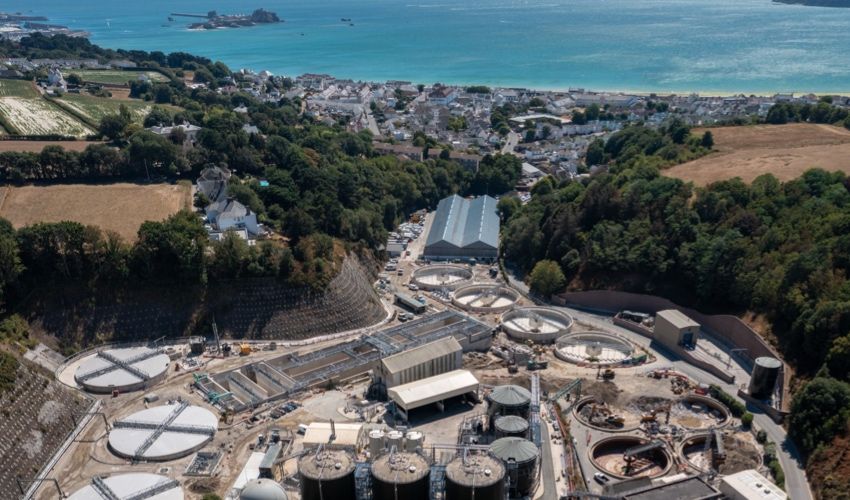

A newly published scientific paper has cast doubt on whether Jersey’s new £75m waste-water treatment works will actually do much to alleviate St. Aubin's Bay's ongoing struggle against the tide of sea lettuce.
Islanders have long been accustomed to the "green bay" and – as the rhyme goes – been told it is "here to stay".
Or, as Environment Minister Jonathan Renouf put it more plainly in October 2022, sea lettuce "will always be present."
These comments came even after ministers announced that the island's new £75m Bellozanne Sewerage Treatment Works (STW), which are due to be fully operational later this year, would help to reduce the nitrate run-off which causes the "green slime" that carpets St. Aubin's Bay every summer, impacting tourists and local businesses.
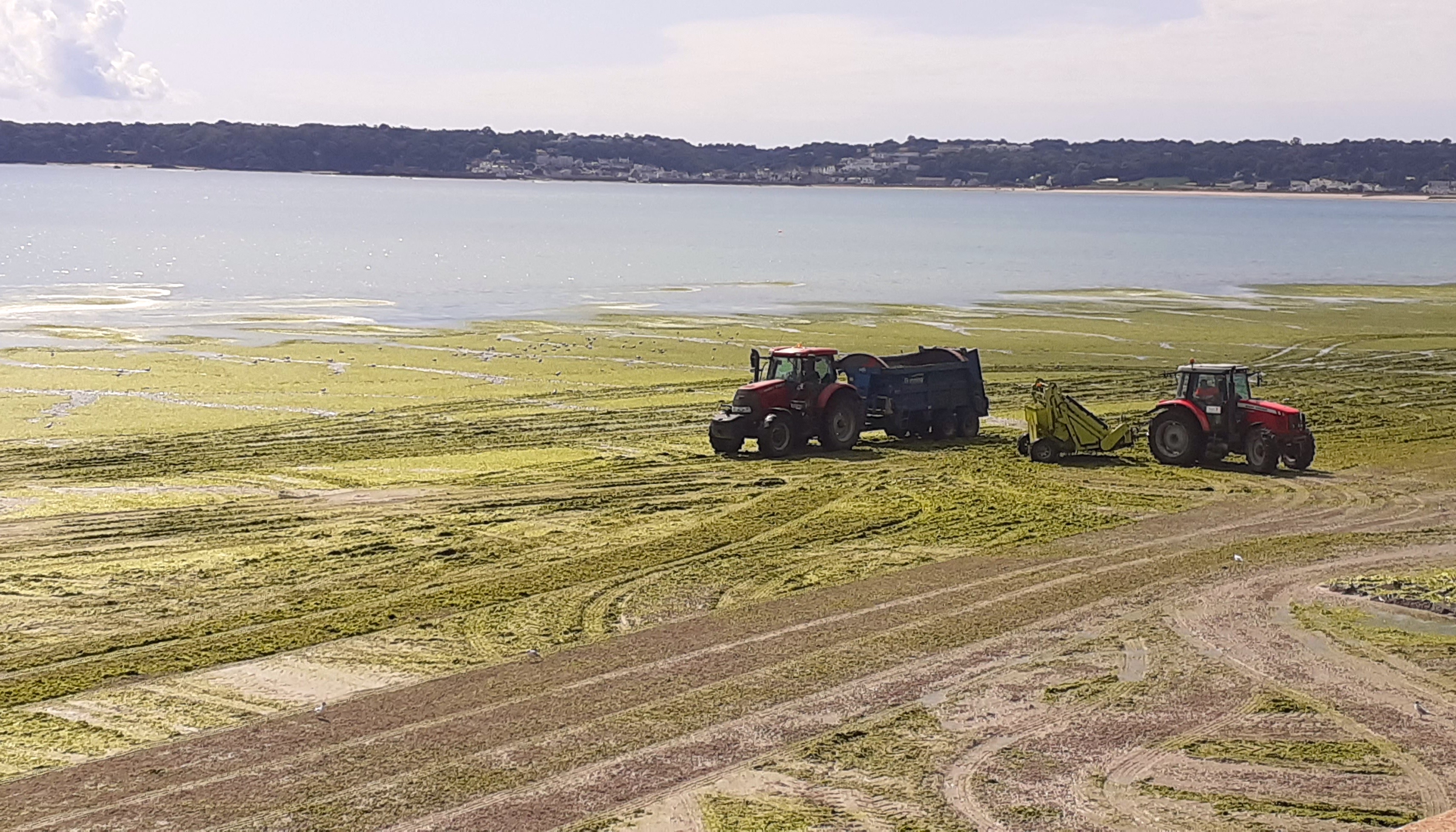
Pictured: tourists and Islanders alike have complained about the "green slime" in St Aubin's Bay (Kieranne Grimshaw).
But what if the green bay was not here to stay? What if the new Bellozanne STW had been designed in such a way that the nitrates and the resultant sea lettuce would reduce to natural, non-nuisance levels?
Getting rid of the slime is no mere "pipe dream", according to a group of geo-chemists from Durham University.
The group recently published a paper (available to read here) analysing Jersey's sewage treatment situation, which makes the following conclusions:
The principal issue is that the Bellozanne STW outflow pipe is directed solely into St. Aubin's Bay.
Treated sewage which is released into the bay is not transported around the island by oceanic currents and mixed with the open ocean, because of the bay's shape and its large tidal range – it serves as a "natural trap".
This causes high and intense nitrate levels which impacts the health of the ecosystem, causing "algal blooms" (sea lettuce) and "significant environmental issues".
The position of STWs and the placement of outflow pipes in islands therefore requires more thorough environmental assessment, considering — at least — prevailing wind and oceanic and tidal currents prior to any planning and development or placement of an outflow pipe. If such investigations had been conducted in Jersey, St. Aubin's Bay "may not be the environmental disaster it has become".
"It is all to do with where they put the pipe," said Dr Darren Gröcke.
He is an Associate Professor and Director of the Stable Isotope Biogeochemistry Laboratory (SIBL) at Durham University, and supervised Freya Alldred, a Masters student and fellow geo-chemist, while she worked on this paper for her undergraduate dissertation.
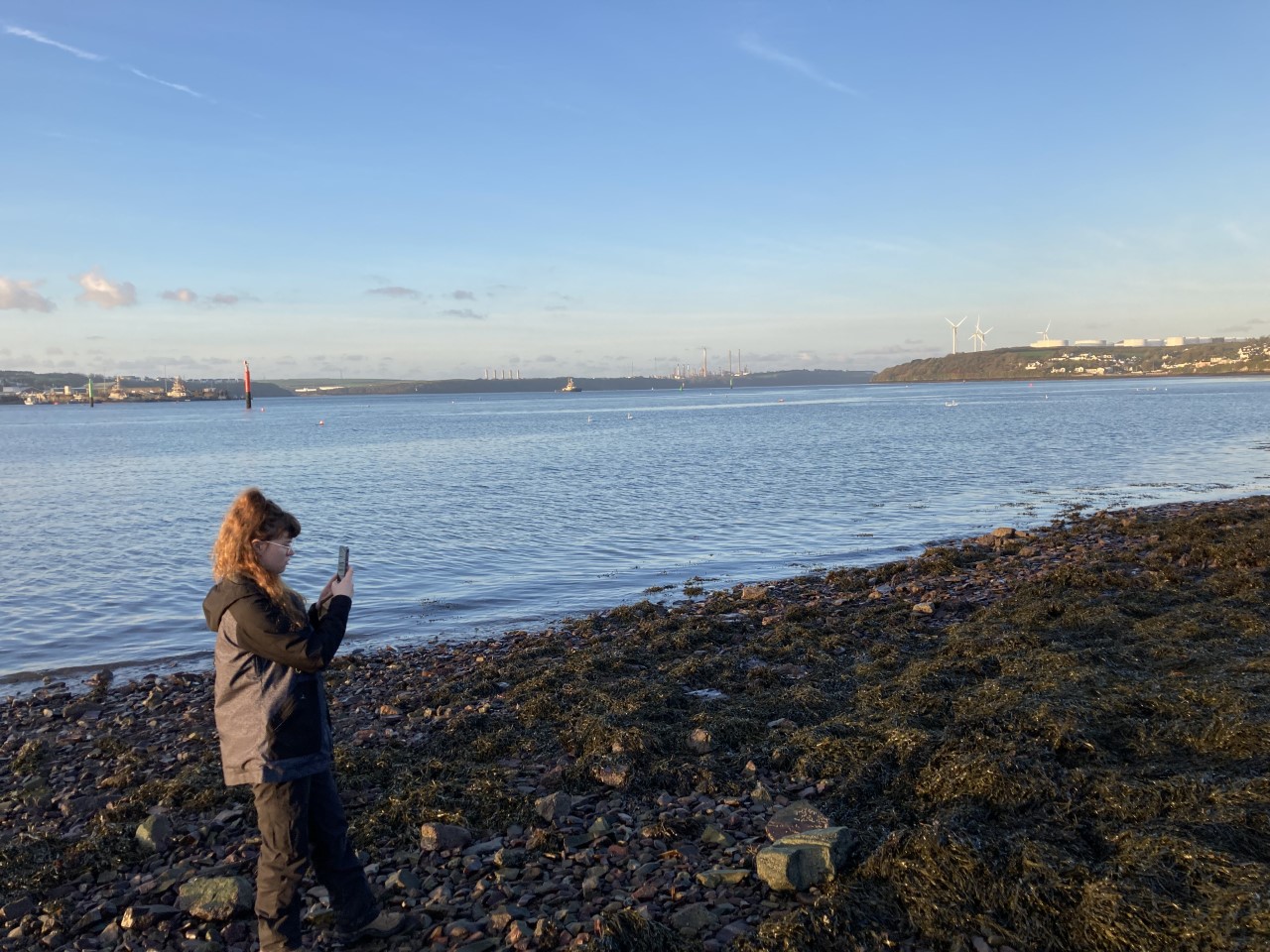
Pictured: Freya Alldred, a geo-scientist at Durham University, doing fieldwork in the Isles of Scilly for the paper's other case study (Darren Gröcke).
"If you outflow sewage further out to sea, it gets into the oceanographic currents. When it is not far enough from a bay, that bay is going to concentrate the sewage. It can't escape. Building a pipe further out to sea or at several sites around the island means there wouldn't be this concentration of nitrogen there, and there wouldn't be those algal blooms."
Dr Gröcke also said that the STW "should have been upgraded many years ago" and that from looking at projected population numbers, "it could be within another ten years that facility will be over-pressured."
The project began with Lucy Wright. When she was sent home to Jersey during the covid pandemic, short of a research topic and suffering from lockdown boredom, she set about collecting samples of macroalgae from around the island with her parents.
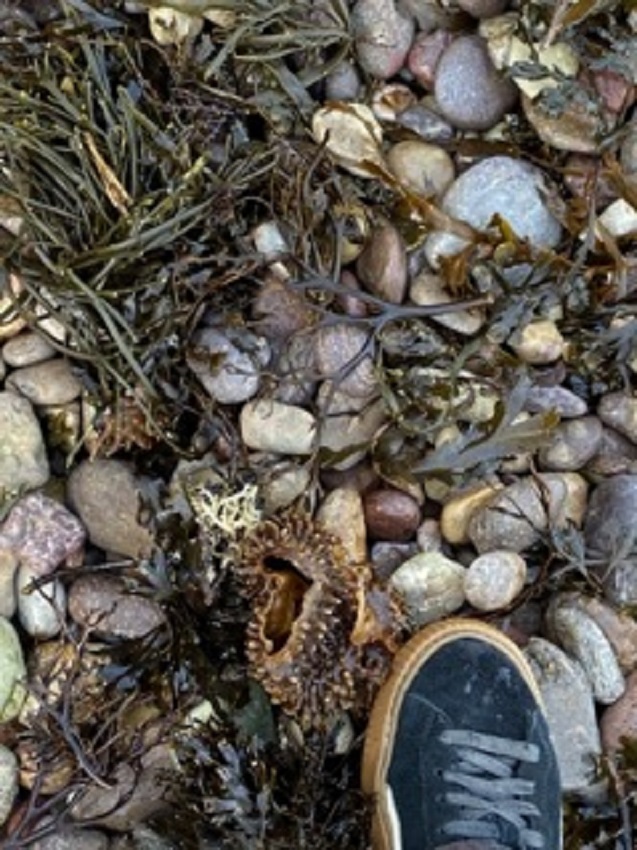
Pictured: Lucy Wright collected the seaweed samples in the covid lockdown with her parents.
Lucy said: "If there were point sources all around the island letting our polluted treating water out and the currents were in favour, that would be highly beneficial
"The state of St. Aubin's Bay has become a bit accepted, but it has been neglected that there could be scientific evidence to improve that."
When she sent the samples to the Durham lab, Freya and Dr Gröcke analysed them and were led to agree: "If you invest some money, you could reduce the green bay phenomenon to the point where you get only natural blooms that you would see anyway. The new plant may help to reduce it, but they could always still do more.
"With more thorough plans, thinking more environmentally, then some of these problems would not exist."
Now for the bad news: the Bellozanne STW will be using the same outflow pipe in the same position.
Asked for its response to the research paper, the government defended the "superb replacement facility" in the works, maintaining that "there are many nutrient sources flowing into St. Aubin's Bay" and noting that the high nitrogen levels causing sea lettuce are "similar" to the bay of Saint Malo.
Infrastructure Minister Deputy Tom Binet told Express that "a comprehensive St. Aubin's Bay study and modelling exercise" had been undertaken before the planning application for a new STW was submitted.
Contrary to the researchers' view, he said that work "found there would be no benefit in extending the outfall further out to sea in terms of reducing nitrate levels in St. Aubin's Bay".
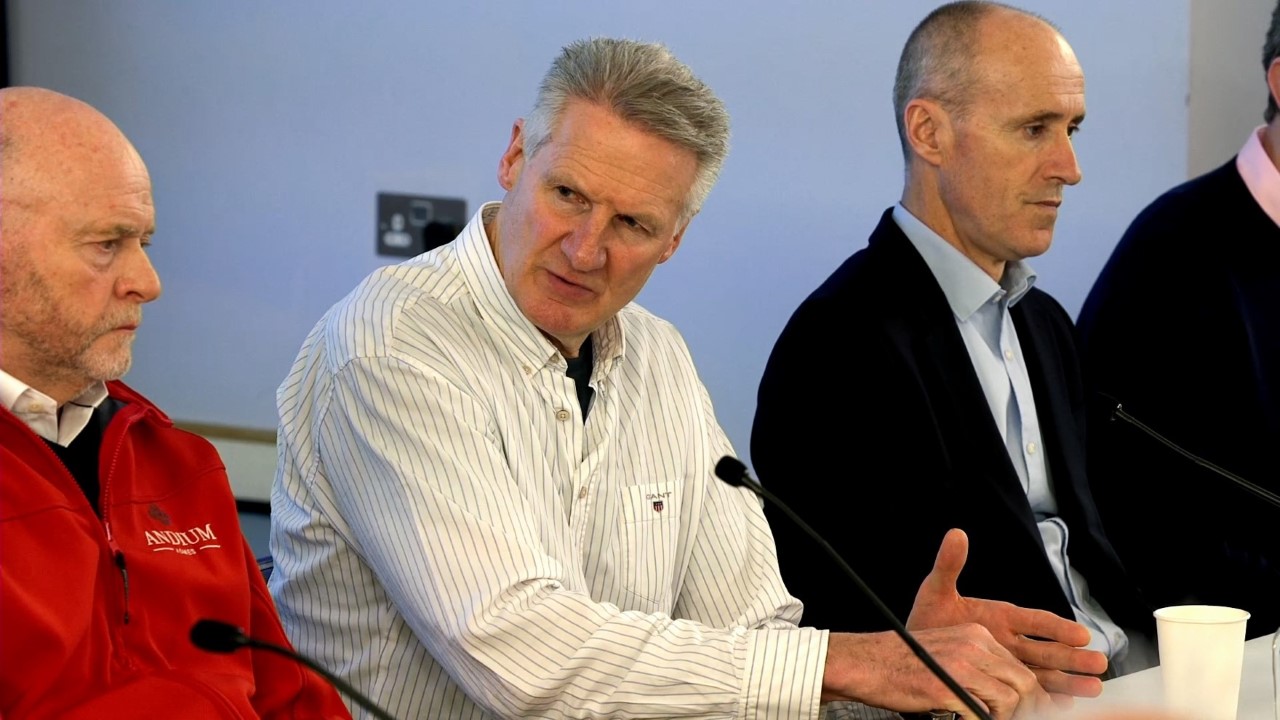
Pictured: Infrastructure Minister Tom Binet has defended the new STW and said there was "no benefit" to extend the outfall further.
Deputy Binet added: "Colleagues from across Infrastructure and Environment have worked closely over a number of years to design a superb replacement facility that is fit-for-purpose to protect the environment, according to the European Water Framework Directive. The standards agreed take into account the fact that there are many nutrient sources flowing into St. Aubin's Bay, not just the Bellozanne outfall."
"Studies have also shown that there are high nitrogen levels in the whole bay of Saint Malo, similar to those found in St. Aubin's Bay."
While Dr Gröcke believes that the STW may come under pressure in the near future, Deputy Binet said the new facility was "designed for the island's growing population up until at least 2050, under the current population growth assumptions."
He added that it will be "closely monitored over the next five years to ensure the environment in St. Aubin's Bay remains at a high standard under the Water Framework Directive."
Asked for his view, Deputy Steve Luce, the former Environment Minister who worked on the upgrade of Bellozanne STW, said that a pipe placed further out would be desirable - and was indeed investigated - but that costs were a key issue.
"It is obvious that the further the outlet is away from the shore, the less impact the discharged liquid will have on marine life close to shore," he said.
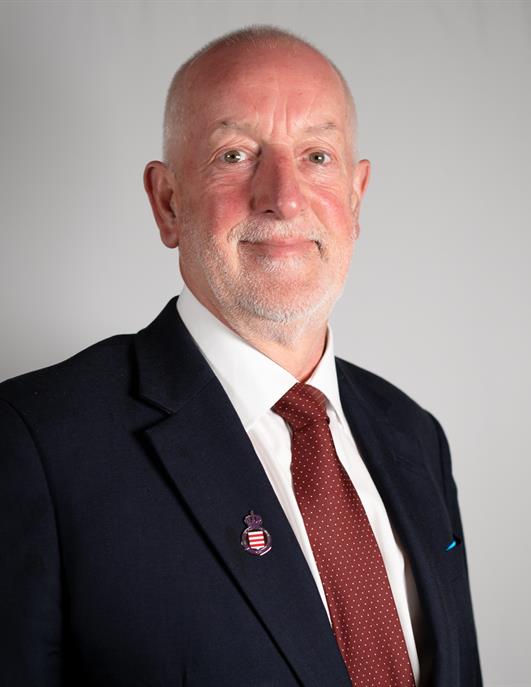
Pictured: Former Environment Minister Deputy Steve Luce said a pipe further out "would be nice" but it was not financially sensible.
"It would be nice to have a pipe that goes much further out, and we did look into that in development, but the problem is that it is extremely expensive."
He added: "The new STW is already showing a vast improvement in the quality of liquid waste being produced, and that is probably the most important thing."
Perhaps only time will tell.
Dr Gröcke said the key message he wants to convey is that "people think that once you put it down your drains or toilets, then it's out of sight out of mind, that it's washed out to sea and disappears. Island communities think that even more so, because the oceanic currents would just take it away.
"But our study shows that it still stays there and can create an environmental problem, which it has, and it will continue to do in this location."
He will continue to work with the Government of Jersey Natural Environment department to assess any changes caused by the new sewerage treatment works.
Pictured top: the Bellozanne STW works are due to be fully operational later this year.
Comments
Comments on this story express the views of the commentator only, not Bailiwick Publishing. We are unable to guarantee the accuracy of any of those comments.